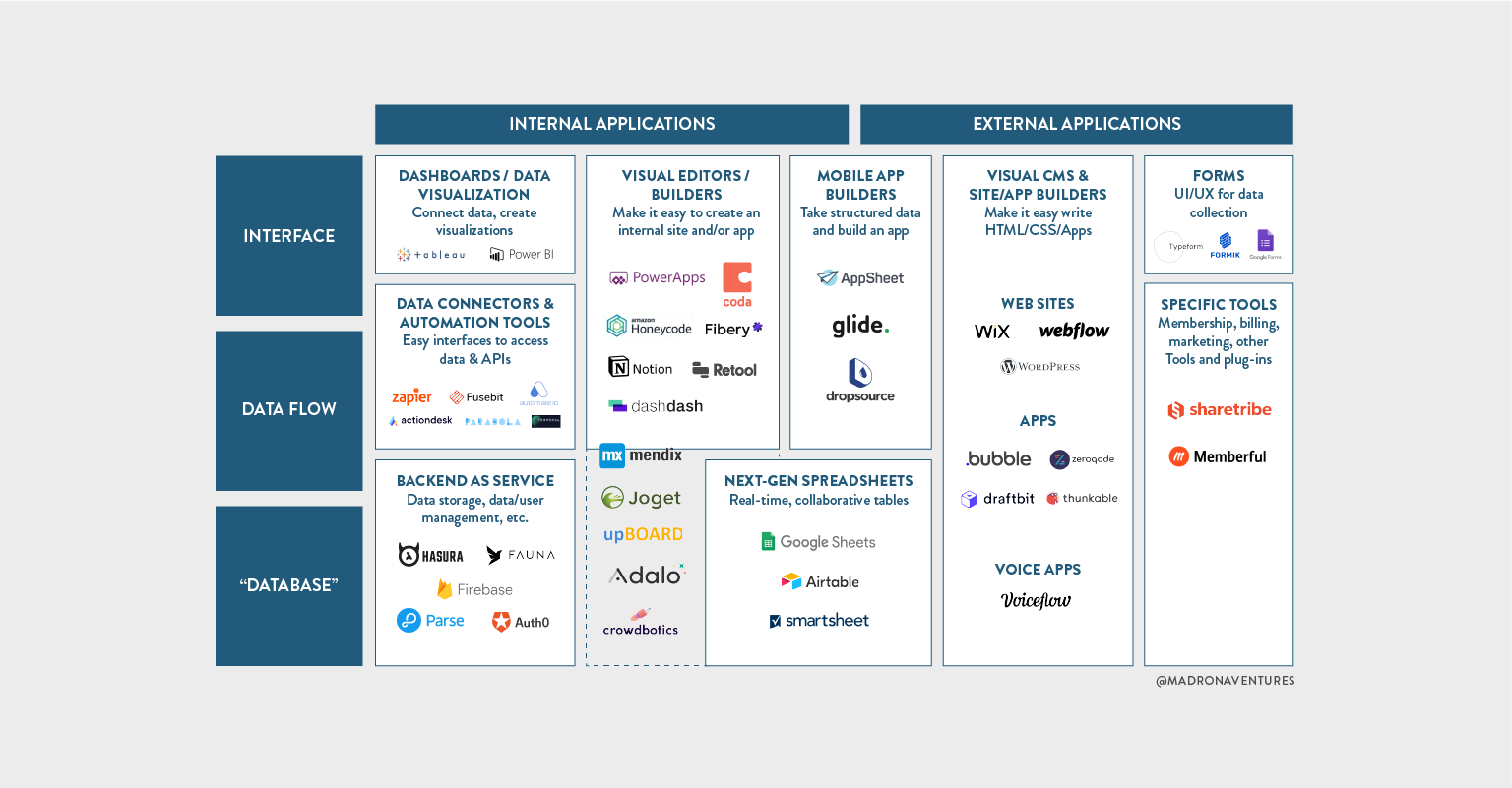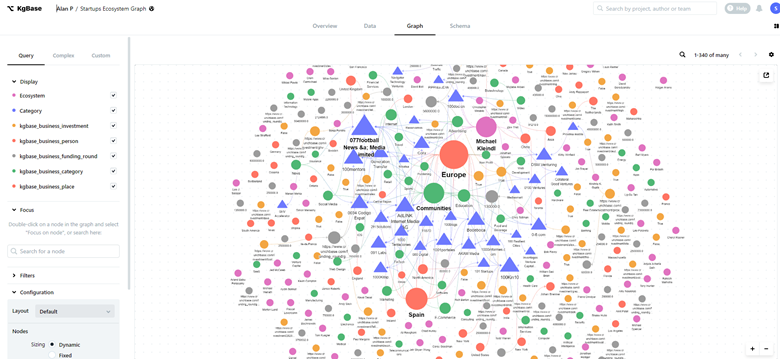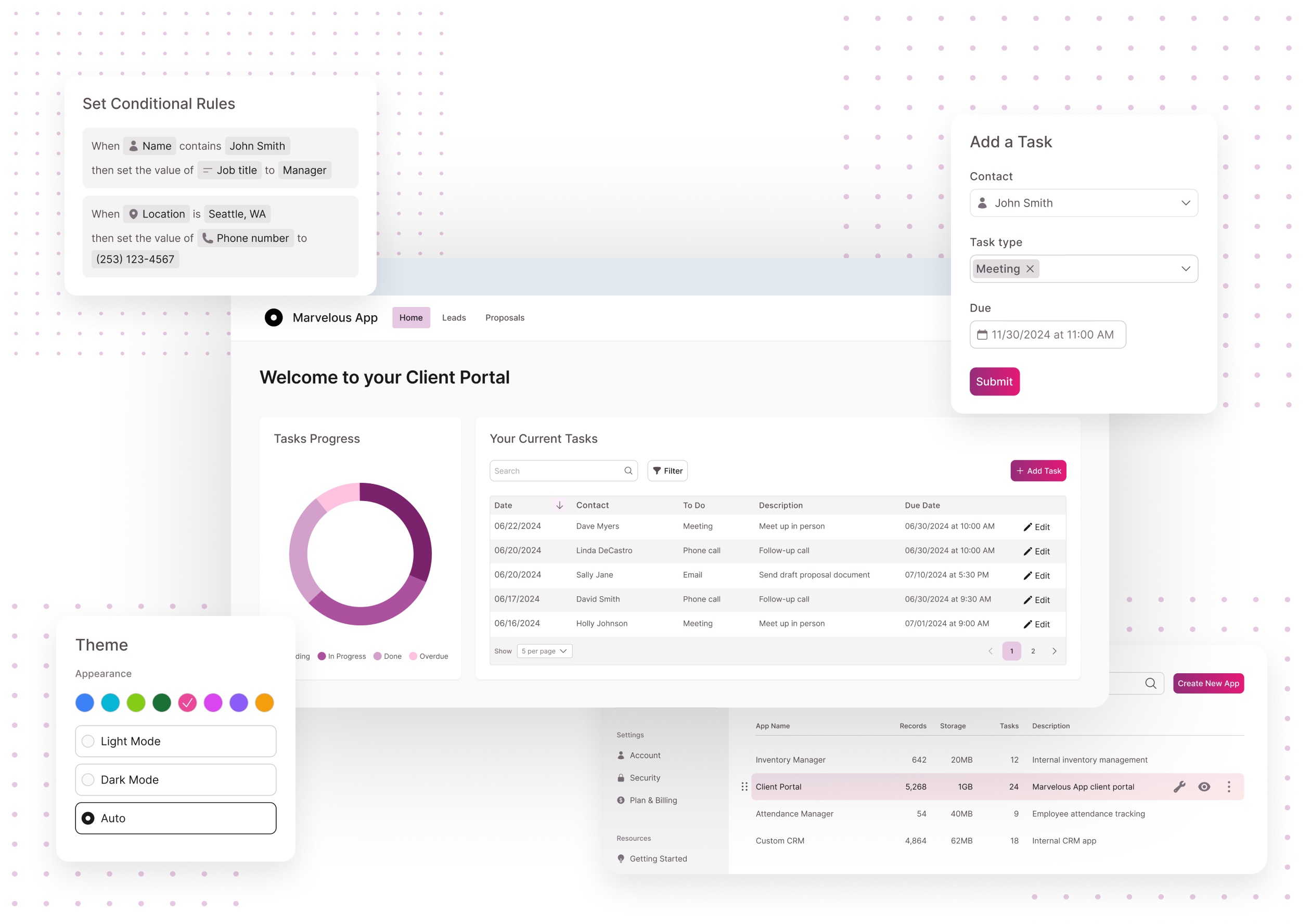Produce Open Platform Databases Quickly with the Best No-Code Tools Available
Produce Open Platform Databases Quickly with the Best No-Code Tools Available
Blog Article
A Comprehensive Overview to Applying Scalable Data Sources Without the Need for Coding Expertise
In the modern landscape of data management, the ability to execute scalable databases without coding competence is coming to be significantly necessary for companies of all dimensions. This overview intends to light up the procedure, concentrating on easy to use devices and instinctive user interfaces that debunk data source setup. By checking out vital features, efficient techniques for implementation, and best practices for ongoing management, we will certainly attend to just how also non-technical individuals can confidently browse this facility surface. What are the essential aspects that can genuinely equip these users to leverage scalable data sources properly? The solutions might redefine your strategy to information administration.
Comprehending Scalable Databases
In the realm of modern-day data monitoring, scalable databases have actually become a crucial remedy for companies seeking to take care of enhancing quantities of information successfully. These databases are created to suit growth by enabling the seamless enhancement of resources, whether with horizontal scaling (including more makers) or vertical scaling (upgrading existing makers) This flexibility is necessary in today's busy digital landscape, where information is created at an unmatched price.
Scalable databases usually make use of dispersed architectures, which allow information to be spread out across multiple nodes. This circulation not just boosts performance however additionally provides redundancy, making sure information schedule even in case of hardware failings. Scalability can be a vital variable for various applications, including ecommerce systems, social media sites networks, and huge data analytics, where individual need can fluctuate considerably.
In addition, scalable databases usually include durable information uniformity versions that stabilize efficiency and integrity. Organizations has to consider their specific requirements, such as read and write speeds, information honesty, and mistake resistance when choosing a scalable database option. Eventually, comprehending the underlying concepts of scalable databases is vital for services intending to prosper in a progressively data-driven world.
Key Functions to Seek
When examining scalable databases, several key features are critical to ensuring optimal efficiency and dependability. Take into consideration the style of the data source. A distributed style can boost scalability by enabling data to be saved throughout several nodes, helping with seamless information gain access to and handling as need increases.
One more vital feature is information partitioning, which enables reliable administration of large datasets by dividing them right into smaller, more convenient pieces (no-code). This strategy not only improves performance yet likewise simplifies source allocation
In addition, search for durable duplication abilities. This feature makes sure data redundancy and high accessibility, reducing downtime throughout maintenance or unanticipated failings.
Performance surveillance tools are additionally important, as they give real-time insights right into system wellness and operational performance, allowing for prompt adjustments to preserve optimum performance.

User-Friendly Data Source Tools
Simplicity is an essential element in the layout of straightforward data source devices, as go right here it improves ease of access for customers with differing levels of technological experience. no-code. These devices prioritize intuitive user interfaces, allowing users to develop, manage, and question databases without needing considerable programming expertise
Secret attributes commonly include drag-and-drop functionality, aesthetic information modeling, and pre-built design templates that simplify the arrangement procedure. Such tools usually supply guided tutorials or onboarding procedures that help with customer engagement and minimize the learning contour. Additionally, smooth assimilation with prominent information resources and services makes sure that individuals can conveniently import and export data, additionally streamlining operations.

Additionally, robust assistance and neighborhood resources, such as discussion forums and documents, improve the user experience by giving help when needed. On the whole, easy to use database tools equip companies to harness the power of scalable databases, making data monitoring easily accessible to everyone entailed.
Step-by-Step Implementation Overview
How can companies successfully implement scalable data sources to meet their expanding information requirements? The procedure begins with identifying certain information demands, consisting of the volume, range, and velocity of data that will certainly be processed. Next off, organizations must evaluate easy to use data source tools that use scalability features, such as cloud-based services or managed data source solutions.
Once the ideal device is chosen, the following action involves setting up the data source environment. This consists of setting up instances, specifying customer authorizations, and developing information structures that straighten with business goals. Organizations should then move existing information into the new system, making certain data stability and very little disturbance to operations.
Post-migration, carrying out extensive screening is crucial; this includes performance screening under numerous lots conditions to guarantee the system can handle future growth - no-code. Additionally, it is very important to train staff on the database administration user interface to assist in smooth use
Best Practices for Management
Effective management of scalable databases requires a tactical method that prioritizes continuous surveillance and optimization. To achieve this, organizations should implement robust monitoring tools that offer real-time insights into database More hints performance metrics, such as query reaction times, resource utilization, and purchase throughput. Regularly analyzing these metrics can aid recognize bottlenecks and areas for improvement.

Routine back-ups and calamity recovery plans are vital to safeguard data stability and availability. Developing a routine for evaluating these back-ups will certainly make certain a reputable healing procedure in situation of an unanticipated failing.
Furthermore, efficiency tuning must be a continuous procedure. Adjusting indexing strategies, maximizing queries, and scaling resourcesâEUR" whether up and down or horizontallyâEUR" will assist keep ideal efficiency as usage demands progress.
Finally, fostering a culture of expertise sharing among staff member will make it possible for continuous discovering and adaptation, making sure that the management of scalable data sources continues to be efficient and efficient in time.
Verdict
In conclusion, the execution of scalable databases can be successfully attained without coding proficiency through the use of user-friendly tools and instinctive interfaces. By sticking to the laid out strategies for setup, data movement, and efficiency testing, individuals can navigate the complexities of database administration effortlessly. Emphasizing ideal techniques for continuous upkeep and collaboration further boosts the capability to take care of scalable databases efficiently in a swiftly developing data-driven environment.
In the contemporary landscape of data administration, the capability to carry out scalable data sources without coding expertise is becoming increasingly important for organizations of all sizes.In the world of modern-day information monitoring, scalable data sources have actually arised as a critical option for companies seeking to handle increasing quantities of details efficiently.Additionally, scalable databases commonly include durable data go to this site uniformity designs that balance performance and integrity.How can organizations effectively apply scalable data sources to satisfy their growing information requirements? Next off, companies ought to review straightforward data source tools that supply scalability functions, such as cloud-based services or took care of database services.
Report this page